In response to a growing interest in residential and commercial solar energy systems, IAPMO first developed and published the Uniform Solar Energy Code in 1976. Just like the 2009 and 2012 editions of this code, the 2015 Uniform Solar Energy and Hydronics code (USEHC) was developed using IAPMO’s American National Standards Institute (ANSI)-accredited open consensus Read more
Hydronics
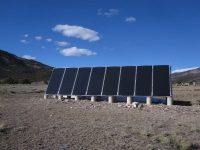
In response to a growing interest in residential and commercial solar energy systems, IAPMO first developed and published the Uniform Solar Energy Code in 1976. Just like the 2009 and 2012 editions of this code, the 2015 Uniform Solar Energy and Hydronics code (USEHC) was developed using IAPMO’s American National Standards Institute (ANSI)-accredited open consensus process, and is unique in that it is both a Code and an American National Standard.
The 2015 USEHC is developed to govern the installation and inspection of solar, hydronic, and geothermal energy systems as a means of promoting the public’s health, safety and welfare. Published previously as the Uniform Solar Energy Code, the 2015 edition adds significant provisions concerning hydronic and geothermal systems (see sidebar, below).

This comprehensive, consensus IAPMO/ANSI Code provides a single source reference for the installation, use or maintenance of radiant, hydronic, geothermal and solar systems. It can have a significant positive impact by leading to the increased utilization of these high efficiency and renewable energy systems. It also raises the bar for the industry, much of which has been unregulated for many years. Uniformity will be a significant benefit, as will the opportunity for fewer callbacks on problem installations and satisfied consumers. No other model code published today specifically addresses the design and installation of solar, geothermal, hydronic and radiant heating and cooling systems.
“This new code provides a single, comprehensive standard for hydronic heating and cooling systems. It will improve the clarity and consistency of hydronic systems design and operation to everyone in the industry,” said Mark Hudoba, director, Heating and Cooling, Uponor.
“Having minimum standards assures that consumers get a solid-performing hydronic heating or cooling system,” said Hudoba.
Who benefits from widespread acceptance and adoption of the USEHC?
- Contractors — The provisions of the USEHC help eliminate confusion and controversy on the part of Authorities Having Jurisdiction (AHJs) by establishing consensus guidelines for the application of radiant and hydronic technologies in the built environment.
- Manufacturers, Engineers, Architects and Contractors — Have pertinent design and installation topics, previously addressed in multiple codes or regulations, now available in a single ANSI consensus standard. (Note that some aspects of system installation may need to comply with mechanical or other codes applicable in the local jurisdiction).
- End Users — Understanding that the sharing of knowledge that the USEHC has been developed by subject matter experts in accordance with vetted system design criteria and accepted construction techniques.
RPA Setting the Bar High
The overall goal of the Radiant Professionals Alliance (RPA) has always been one of raising the bar for professionals, while instilling confidence in the consumer and government that properly designed, installed and maintained hydronic systems will and can provide the highest degree of comfort and efficiency.
The RPA is committed to contributing professionalism to the entire hydronics/radiant industry and promoting such systems as the most viable path to energy savings and comfort for the end user. Many provisions of the 2015 USEHC concerning radiant heating and cooling applications have not appeared in model codes before; RPA’s involvement in the development of relevant language ensures that state-of-the-art design and construction principles are considered.
It has taken years of diligent effort by RPA and the collective best minds in the industry. When the decision was made to create a Hydronics Code, RPA was successful in creating a code committee representing all facets of the industry: manufacturers, suppliers/distributors, contractors, installers, and government officials/inspectors. The RPA Code Committee spent more than a year compiling relevant information, even from foreign countries, and molding it into a working document.
“We find ourselves on the brink of bringing this whole program to fruition. We are getting prepared to help our members of this industry to move forward, and put hydronics into the wheelhouse of every consumer, architect and engineer in North America, and it is critical that we have to include the installation and design entities as a part of our program. The RPA always has been, and will continue to be, about education. Not just contractors education, but education of the end users, as well as the design teams involved in putting these buildings together, and the people in the field enforcing these codes,” said Mark Eatherton, executive director, RPA, which is in the process of developing educational curriculum that will explain the many nuances of the code, and provide drawings and explanations for purposes of interpretation. These classes will be offered to RPA and IAPMO members at a discount over non-members. A formal announcement will be made once these classes come online.
Although RPA did offer voluntary guidelines in the past, there was very little information available to the industry or the consumer in a meaningful, useable format regarding design criteria and best practices. Much of the content of the RPA guidelines was in more of a “should” configuration, as opposed to mandatory code required language, using words like “shall.”
When the possibility arose that the RPA Code document could become part of an American National Standard, the document was submitted into the process, a balanced ANSI Committee was created, and the document was further refined over an additional three years, with experts from every facet of the industry contributing countless hours, worth literally millions of dollars, to the effort.
Having an accredited American National Standard brings the ultimate credibility to the USEHC.
Local Enforcement
A code is only as good is the enforcement in the field. The RPA has begun teaching and working with the code enforcement officials in itx efforts to bring their knowledge base of these mechanical systems up to speed so that they are much more comfortable performing their job in the field.
Some people believe that the code will dictate exactly how they must install their system. This is not correct. The code establishes a minimum standard, and in most cases where the contractors have been receiving training, guidance and direction from competent manufacturers, they are already installing systems that exceed the minimum standards. It is those jobs that are being performed by unqualified, untrained personnel that will be required to change their ways. Our bottom line goal is to increase the consumers’ confidence about the safety, reliability, efficiency and comfort associated with the proper design and installation of these wonderful systems and make the installing contractors job of meeting the AHJ’s requirements quicker, smoother and easier.
The availability of this code means that in jurisdictions where it is adopted, a single source for many provisions affecting the installation of these systems will be available to contractors and AHJs.
“I expect two primary impacts on AHJ’s. First, many AHJ’s will look to familiarize themselves with the code in an effort to improve their ability to inspect and approve systems. Code information and training opportunities for AHJs can be found on the IAPMO website: http://www.iapmo.org. An electronic version of the code can be viewed at http://epubs.iapmo.org/USEHC/. Second, the code will make it easier for AHJs to enforce the code due to the consistency of proper system design and installation,” says Hudoba.
It will provide residential and commercial consumers the assurances and protections of a viable, quality installation in an understandable format. Inspectors and AHJs receive the guidance and protections of a model code developed in a consensus process from the industry. “The clarity and consistency that the code provides will reduce the number of improperly designed and ill-performing systems that are installed, thereby enhancing the overall professionalism of the hydronics trade,” said Hudoba.
Designers and contractors should know that subject matter experts specializing in each of the technologies addressed in the USEHC invested significant personal time in the development of the code in an effort to include accurate and complete provisions.
The code will provide experienced installation contractors with verification that what was taught to them by competent manufacturers and the RPA are good recommendations to follow, and that their work will exceed the codes minimum requirements.
“As a former working mechanical contractor, I can speak from personal experience that the only way we typically find out that the code has changed is when we violate the code and find ourselves on the wrong side of the enforcement official. That is a very expensive, non-productive method of learning, but one that you won’t soon forget. We are trying to educate our members in advance so that when their jurisdiction adopts these codes that they will not be caught flat footed,” said Eatherton.
The Federal Fingers
There have been rumblings from within the industry about government overreach and about contractors who are worried about the government’s involvement in building a hydronic code. Yet, it isn’t the government developing the code, it is the industry that is responsible for helping to develop the codes. “It is the government that will be enforcing the code, and any code is only as good as the AHJ who is enforcing the code. We have already started training the AHJ’s, and this will only make the good contractors job easier. The inspectors will now have the ability to know what is right, and what is wrong, and the right ways of performing these jobs,” said Eatherton.
A contractor who has received good and regular training from a recognized, competent manufacturer is most probably not going to have to make any major changes in their operations. They are already in compliance with the provisions of the code. It is the unlicensed people who are out there doing all of the wrong things that end up giving our industry a black eye that will be the focus of this code, not the well trained, experienced contractors.
As a code/standard development organization, IAPMO is constantly looking for more involvement from our industry members, regardless of where they fall in the food chain. Everyone from the consumer all the way up to the manufacturer, and every entity in between has open access to the process, and we invite their participation in the development of these open consensus codes and standards.
Manufacturing members must be included as a part and parcel of this whole process. Many of the manufacturers have helped in populating the many different technical committees involved in the development of the applicable codes. “We will be leaning heavily upon our manufacturer members in all aspects of the deployment of this code and the associated education and certification standards that were developed in conjunction with the code. We intend to certify our manufacturers facilities, as well as their instructive personnel to bring the whole program together. We’ve already begun negotiations with numerous manufacturer members, and they are in full support of our efforts,” said Eatherto
Additional Standards
To increase customer awareness and confidence, ASSE International is developing a Hydronic System Installer and Hydronic System Designer National Standard and certification program. It is our intent that the Authority Having Jurisdiction will recognize this certification and require it as minimum criteria to allow contractors and designers to perform work in their jurisdiction. This program is expected to be released in 2016.
The RPA is developing an Instructive Training Manual, and a Best Practices Manual. These two items will be used going forward to ensure that we have provided the contractors and designers with the tools necessary to ensure proper and appropriate applications of these mechanical systems. It will take the designers and installers through the steps necessary to ensure that the delivery method correlates with the energy source. Using staple up tubing with a ground source heat pump has its limitations, and we must make certain that everyone with skin in the game understands the limitations and appropriate application of these and all hydronic heating and cooling systems.
The RPA has been heavily involved in the development of the ASSE/IAPMO/ANSI Series 19000: Hydronic Systems Professional Qualifications Standard. This Standard is a program to certify expert hydronic heating and cooling systems designers and or installers, as well as solar thermal installers. This is a very stringent program, requiring proof of active field service as well as approved course materials before the applicant will be allowed to sit for the test. Our hope is that the AHJ’s around the country will recognize this program for the value that it brings to the industry, and we hope that it will become a minimum requirement for people who are applying for licenses to do hydronic and solar thermal work in their jurisdiction. This will have some mandatory educational provision that the RPA already has available to the public thorough our educational partner, HeatSpring. These courses can be previewed at https://www.heatspring.com/partners/radiant-professionals-alliance.
SIDEBAR
Solar & Hydronics Code Provisions
Key provisions of the 2015 USEHC and changes from the 2012 edition include:
- New hydronics chapter provides:
– radiant heating and cooling
– snow melt systems
– minimum requirements for the capacity of heat sources
– heating appliances and equipment
– piping, joints and connections
– system controls
– space heating
– steam systems
– auxiliary systems
– installation, testing and inspection of hydronic systems
- New condensates waste and control provisions for condensate-producing equipment and appliances
- New alternative engineering design provisions
- New provisions for accessibility, attic and underfloor installation, and roof installation of appliances and equipment used in solar energy, hydronic, and geothermal energy systems
- New solar thermal provisions, such as materials, solar collectors, freeze and overheat protection, drainback and thermosiphon systems, and pressure testing
- New geothermal energy systems chapter provides minimum requirements for groundwater systems, ground-heat exchanger design, heat exchangers, heat pumps, distribution design, and the installation of geothermal energy systems
- New duct systems chapter provides minimum requirements for ducts used for conveying air for heating and cooling of spaces
- New electrical provisions for the installation of solar photovoltaic systems based on NFPA 70-2014
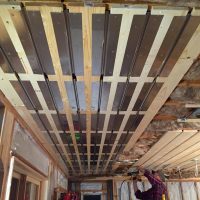
I recently started up the heating system for our family’s cabin in Northern Minnesota. Yeah, recent as in a couple weeks ago when our heating systems were still needed overnight and even some days. The heating system is a hybrid of panel radiators and radiant ceilings with a few feet of baseboard in the mix Read more
I recently started up the heating system for our family’s cabin in Northern Minnesota. Yeah, recent as in a couple weeks ago when our heating systems were still needed overnight and even some days. The heating system is a hybrid of panel radiators and radiant ceilings with a few feet of baseboard in the mix.
The radiant ceiling is for the main living area [slab on grade, ground level]. It was selected over all other emitter options because it provided us with the most flexibility of room layout, furniture placement and available wall space for cabinets, windows etc. I should also point out that the concrete slab was poured in the 80’s and is in no condition to consider removing for in-slab radiant installation given the added cost to the project and extended timeline that would create. Oh, and I’m not a huge fan of engineered panel systems that install over existing floors; at least not over concrete given the added downward load and modification to finished floor height.
We simply went the old fashion route and built the ceiling panels with 1x boards, aluminum heat transfer plates and PEX tubing (MR PEX, O2 Bariirer 1/2″ tubing & MR PEX S.S. Radiant Manifolds).
I was able to take some quick videos and photos of parts of the install and finished product. Take a look below and please continue reading as I’d like to cover a few myths with my own explanations about why radiant ceilings are a good alternative to radiant floors and are often overlooked.
The following are excerpts from a previous blog post I shared here on The Hub.
Radiant ceilings can easily operate at surface temperatures up to 100 F, delivering in excess of 55 Btu per square foot. Since ceilings are typically constructed of gypsum based sheet rock, they offer very little resistance to thermal transfer. Unless interior designers regress to the 1960’s and resume putting shag carpeting on the ceilings it’s likely the output of the ceiling won’t change during the life of the home. In any discussion of radiant ceilings and comfort, there seems to be some ingrained misunderstandings of the concepts. Someone will say that “heat rises, therefore you’ll have a hot head and cold feet”. Not true. Heat doesn’t rise. Hot air rises. In radiant systems objects of mass are heated without heating the air. In fact, there is typically more hot air rising with a radiant floor than with a radiant ceiling. This is because air molecules that come into contact with the radiant ceiling already occupy the highest strata. In radiant floors, the cooler molecules sink and come into contact with the warm floor surface and rise as their density changes with heat, driving the convective forces that cause stratification. Under normal conditions neither radiant floors nor radiant ceilings heat the air to an uncomfortable level like in forced air systems.
In any discussion of radiant ceilings and comfort, there seems to be some ingrained misunderstandings of the concepts. Someone will say that “heat rises, therefore you’ll have a hot head and cold feet”. Not true. Heat doesn’t rise. Hot air rises. In radiant systems objects of mass are heated without heating the air. In fact, there is typically more hot air rising with a radiant floor than with a radiant ceiling. This is because air molecules that come into contact with the radiant ceiling already occupy the highest strata. In radiant floors, the cooler molecules sink and come into contact with the warm floor surface and rise as their density changes with heat, driving the convective forces that cause stratification. Under normal conditions neither radiant floors nor radiant ceilings heat the air to an uncomfortable level like in forced air systems.
Another myth about radiant floors and ceilings involves the surface temperatures that are achieved. Just as the beach sand absorbs the overhead rays of the sun, radiant ceilings warm the floor. There are no cold floors in radiant ceiling projects.
Installing the radiant ceiling PEX tubing. #boilerguy
A video posted by Aune (@awe_knee) on

Kitchen and patio Door area. Notice not all of the ceiling requires tubing installation to meet the heat load requirements.
As always, if you’ve got something to add to this article or have any questions for its author please do not hesitate to do so in the comment section below. Thanks for your time!
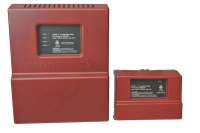
The expandable Grundfos UPZC series of zone controls manage circulator and boiler control in residential hydronic heating systems. The non-networked devices control up to six heating zones and can be coupled together in various configurations to accommodate any application. Boiler pumps, domestic hot water pumps, system pumps and pump priority are all controlled from the Read more
The expandable Grundfos UPZC series of zone controls manage circulator and boiler control in residential hydronic heating systems. The non-networked devices control up to six heating zones and can be coupled together in various configurations to accommodate any application. Boiler pumps, domestic hot water pumps, system pumps and pump priority are all controlled from the UPZC control.

The zone relay control connects to standard thermostats using either two or three wires. The optional third wire provides 24VAC to thermostats that require external power. The UPZC operates in a cold start configuration with a call-for-heat from a thermostat. The module’s relay is energized which, in turn, switches 120VAC to activate the circulator and also provides a call-for-heat signal to the boiler.
Side-mounted terminals provide simple access and wiring, while the forward facing, easy-to-read LED display on the front panel shows system status and zone function.
All models are UL-listed in the United States and Canada and carry a three-year warranty.
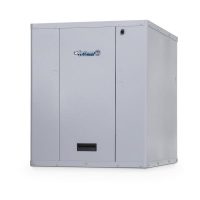
WaterFurnace International, Inc., a leading manufacturer of geothermal and water source heat pumps, introduces the 5 Series 504W11 hydronic geothermal heat pump, featuring WaterFurnace’s patent-pending OptiHeat vapor injection technology. While most hydronic geothermal systems generate 130°F water, OptiHeat creates exiting water temperatures up to 150°F, thanks to an additional heat exchanger that diverts excess heat Read more
WaterFurnace International, Inc., a leading manufacturer of geothermal and water source heat pumps, introduces the 5 Series 504W11 hydronic geothermal heat pump, featuring WaterFurnace’s patent-pending OptiHeat vapor injection technology.
 While most hydronic geothermal systems generate 130°F water, OptiHeat creates exiting water temperatures up to 150°F, thanks to an additional heat exchanger that diverts excess heat and reinjects it into the system. This provides increased heating capacities and greater efficiencies. This product is the first water to water heat pump for the North American market to feature vapor injection technology.
While most hydronic geothermal systems generate 130°F water, OptiHeat creates exiting water temperatures up to 150°F, thanks to an additional heat exchanger that diverts excess heat and reinjects it into the system. This provides increased heating capacities and greater efficiencies. This product is the first water to water heat pump for the North American market to feature vapor injection technology.
“OptiHeat was the result of strategic research and development, including customer feedback,” said Tim Litton, director of marketing communications, WaterFurnace International, Inc. “Combined with other innovative features, the 5 Series 504W11 offers consumers highly efficient heating capabilities in a very small footprint. It’s the most efficient, Energy Star rated water to water heat pump available on the market.”
Offering efficiencies up to 16.1 EER and 3.3 COP, the 5 Series 504W11 is ideal for high-temperature applications, such as baseboard radiator systems, underfloor radiant applications, overfloor radiant applications, and fan coils. The units can operate in heating-only or heating/cooling modes.
Copeland scroll compressors – double isolation mounted for quiet operation – combine with R410-A refrigerant and an extra heat exchanger to provide exceptional efficiency, reliability and energy savings.
WaterFurnace’s Aurora communicating controls platform provides simple setup, troubleshooting and diagnosis. Additionally, WaterFurnace’s Aurora Interface Diagnostic (AID) tool simplifies service and diagnostics for contractors, thanks to its external communication port that does not require opening the unit. IntelliStart, an optional soft starter, can reduce start-up amperage by up to 60 percent of normal draw, reduce noise, eliminate light flicker and increase compressor life.
The 5 Series 504W11’s cabinet is fabricated from heavy-gauge steel, while a professional-grade textured finish provides long-lasting protection. Control panels can be placed on either end, which allows piping to be located on the front or back and helps improve serviceability.
To learn more, visit the WaterFurnace website at www.waterfurnace.com.
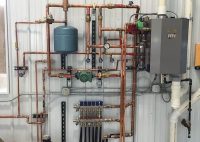
The city of Amboy, Ill. needed an in-floor radiant heating and domestic hot water (DHW) system, and Grasser’s Plumbing and Heating was more than happy to oblige. Grassers has been making customers happy for over a half of a century. In fact, and they have become one of the most successful and trusted plumbing and Read more
The city of Amboy, Ill. needed an in-floor radiant heating and domestic hot water (DHW) system, and Grasser’s Plumbing and Heating was more than happy to oblige. Grassers has been making customers happy for over a half of a century. In fact, and they have become one of the most successful and trusted plumbing and heating companies in the LaSalle, Peru, Princeton and Ottawa, Illinois area for more than 60 years.

According to tech Tim Kuhlman—who works mostly high-end new construction and commercial jobs—the city of Amboy needed radiant heat for one of its 4,000-sq.-ft. “sheds,” which is used for the maintenance of city vehicles and storage, and domestic hot water for a service sink.
The hot water solution was a primary/secondary piping application and provided by an NTI Ti200AC Trinity combi boiler, which features a state-of-the-art sealed modulation combustion system with hot surface ignition and patented 316L stainless condensing heat exchanger provides higher efficiencies. The combi boiler supplies heat to stainless steel Viega radiant manifolds—with shutoff and balancing/flow meters—which feeds Viega’s PEX tubing in the floor, and it also supplies domestic hot water for the service sink.
Inside the Job
Boiler — NTI Ti200AC Trinity combi boiler
Pumps — B&G pl 36 primary; Taco 2400-24 secondary
PEX — Viega & REHAU
Valves — NIBCO
Expansion Tanks — Extrol
Balancing/Flow Meters — Viega
Air Eliminator — Honeywell Supervene




